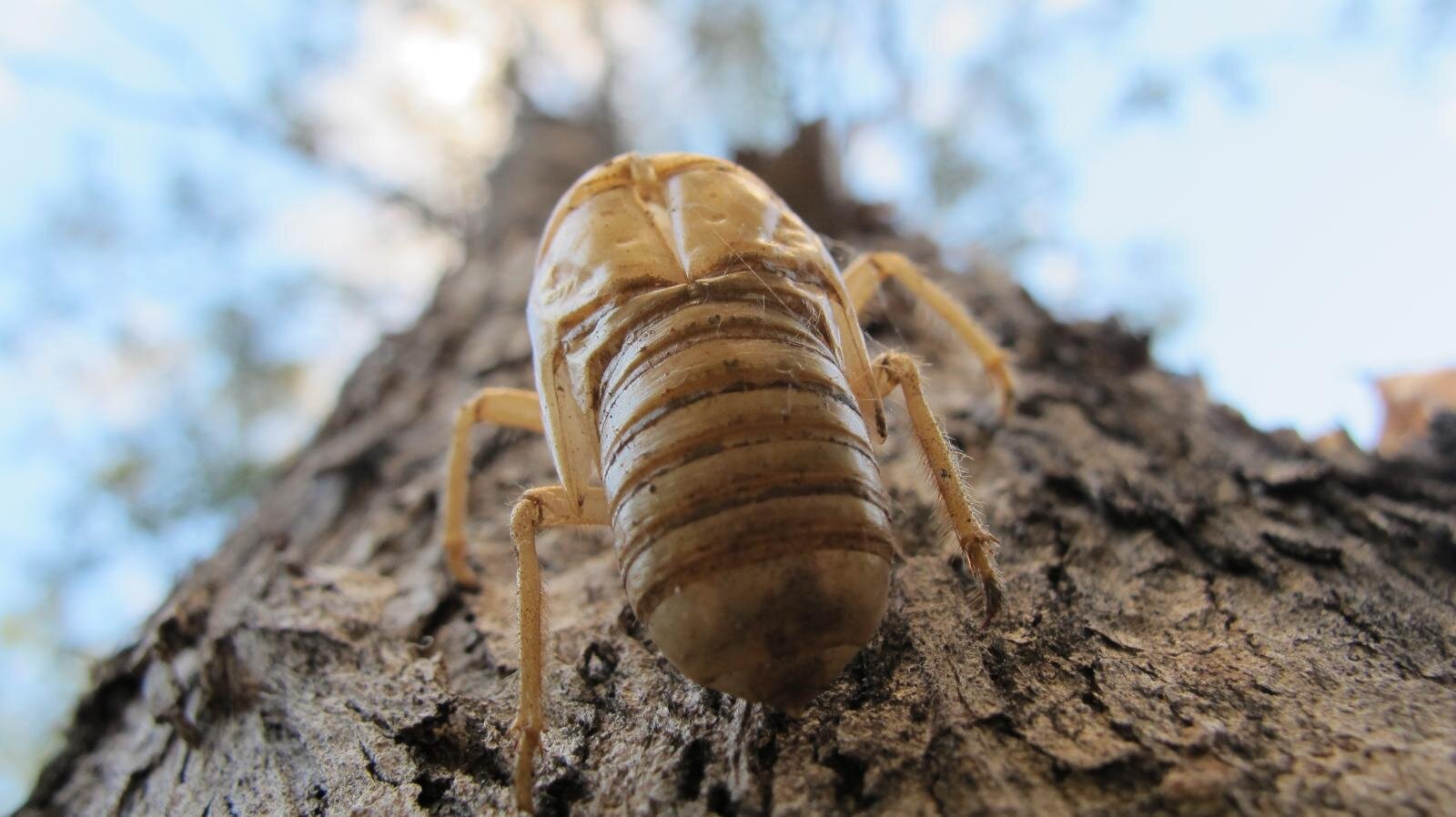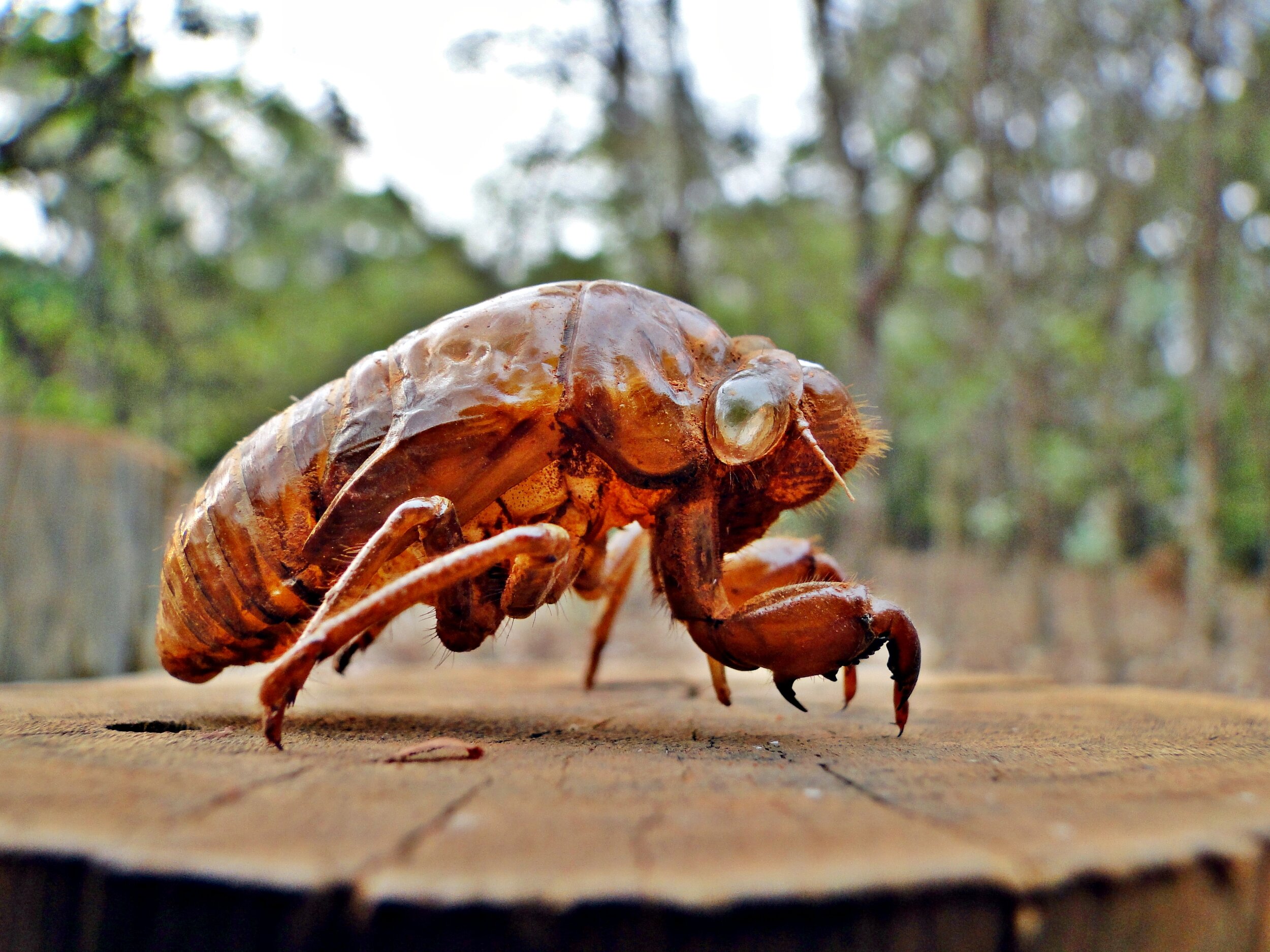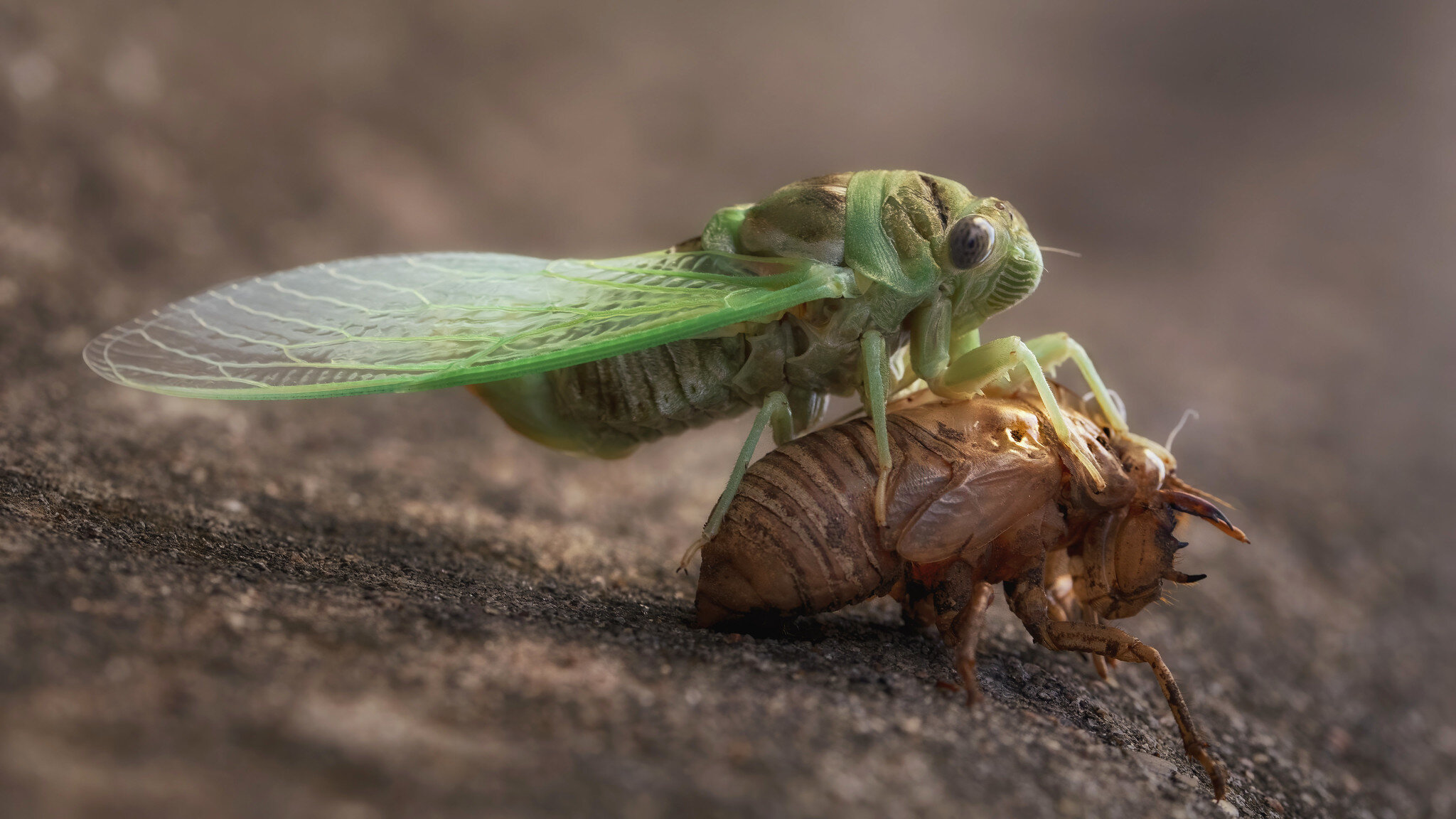Cicada Chronicles
After 17 years underground, we will welcome billions of Brood X cicadas as they emerge in 15 states across the eastern United States this spring and summer! If you think the cicadas that appear every year to serenade you on quiet summer nights are loud, wait until this May when swarms of red-eyed insects overwhelm all other sounds of nature.




There are over 3,000 species of cicada found around the world, residing on all continents except Antarctica. The periodical cicadas emerge in various parts of the U.S. every 13 or 17 years and provide an excellent opportunity for us to train as entomologists! In this activity, we will learn about the life cycle of a cicada through research and field observations.
Tools
Pencil and paper
Colored pencils or crayons
An insect jar (or any clear container with a lid that has holes)
PBS’ short video on Why 13-17 Year Cicadas?
Printable Life Cycles of a Cicada Worksheet (optional coloring)
Map of Periodical Cicada Broods (optional reading)
Return of the Cicadas Documentary (optional video)
Steps
Step 1: Write down or tell an adult or caregiver what you know about cicadas. Some questions to think about: What are cicadas? What is so special about these insects? Are cicadas harmful? Why do they go underground? Why do they make noise?
Step 2: Find a live cicada! Look for three of the four life cycle phases of a cicada (nymph, molting, or adult). Go outside with your insect jar and pencil and paper to search for and observe cicadas. You may find them climbing up tree trunks, wood pilings, or walls. If you are willing, carefully collect your cicada and gently place it in your jar. It is easiest to catch them if you delicately pinch the cicada on its back to keep the wings closed. Please do not disturb or touch a molting cicada because they are very fragile — leave them in their space.
If you don't want to touch an adult cicada or a nymph with your fingers, use a piece of paper or tissue to gently nudge/scoop the cicada into your jar.
If you don’t want to collect a cicada, you can complete Step 3 wherever you find it. You can also collect the cicada’s exoskeleton, the dried skin from its nymph phase.
Step 3: Observe your cicada. Take some time to sketch what you see on paper, draw the different body parts you observe (e.g. eyes, mouth, wings, legs, etc.). Use your colored pencils or crayons to capture the amazing colors on your cicada. Once you complete your sketch, release your cicada back to the wild where you found it.
Step 4: Try to find the other life cycle phases and sketch them too. Please note that the eggs are very fragile, so only look for the nymphs, molting cicadas, or adults. What do you notice that is different about the body parts in each phase? Does the coloration of the insect differ? If so, how does it differ and why might it differ (think about the past activity, Critter Camouflage, for ideas).
Step 5: Share what you have learned and observed with your friends and/or an adult. Why are cicadas so special? What do they look like? What similarities are there between the nymph and the adult phase? What makes a periodical cicada different from all other cicadas? How are they the same?
To Do or Learn More:
Excellent information on all things related to cicadas can be found at the Cicada Mania website https://www.cicadamania.com/.
Brood sizes are large and cover multiple states. Entomologists rely heavily on observations provided by community scientists to track emergences and define their geographic boundaries. You can help to map the broods and detect potential stragglers (late emergers) by uploading photographs of your observations into the iNaturalist database.
Follow the life cycle of a cicada as it emerges from the ground, sheds its exoskeleton, engages in the mating ritual, lays eggs, and completes the final stage of its life with this time-lapse video of the 17-year cicada. Fun fact: Indiana-based cinematographer Samuel Orr Fun spent six years filming more than 200 hours of cicadas!
Let’s Talk About Cicadas!, by Students Discovers provides high-quality and close-up images of cicadas at specific life cycle phases. See if you can identify the various body parts from your sketches.
Return of Periodical Cicadas in 2021: Biology, Plant Injury and Management, by Dr. Michael Raupp, the Bug Guy from the University of Maryland.
Cicadas belong to the order of insects called Hemiptera, or True Bugs. Students can visit BugGuide.net to learn more about other True Bugs, such as the Assassin Bug, the Giant Water Bug, and the Stink Bug. Compare cicadas to other Hemipterans with our Animal Fact Find Worksheet.
Did you know that only the male cicadas “sing,” vibrating the air around them? Adult cicadas spend most of their time in trees looking for a mate. Males sing hoping to attract a response from females that are interested in mating, females respond with a click, and mating begins. Watch this short video by National Geographic to learn more about how cicadas make noise!
Cicada-Licious, a cicada cookbook released by the University of Maryland, is packed with heaps of real recipes, including Chocolate-Chip Trillers and El Chirper Tacos. If you are going to try any of these recipes, be aware that you may be allergic to cicadas and not realize it!
What is Brood X? When do cicadas come out in 2021? The Washington Post answers some of the buggiest questions.